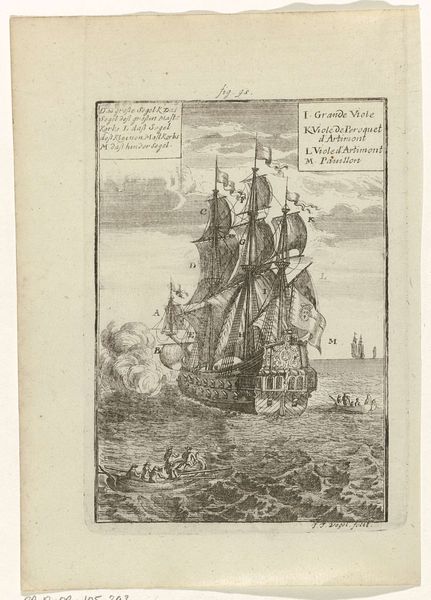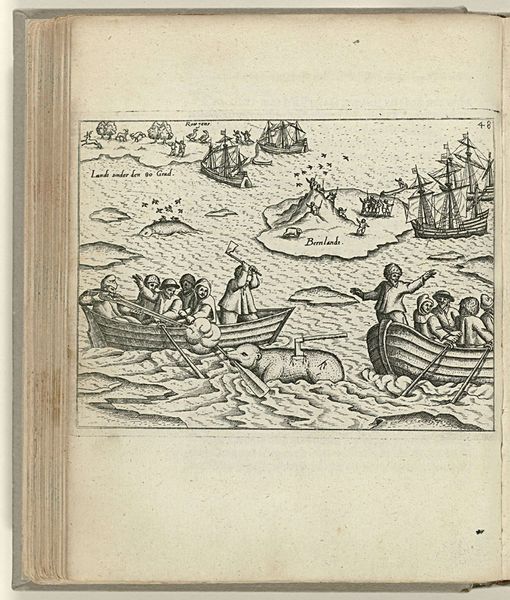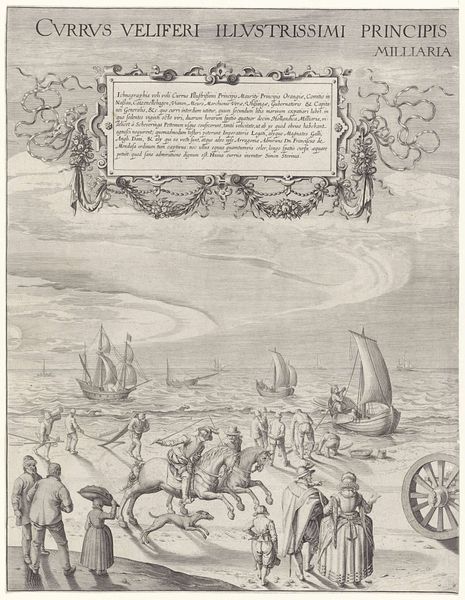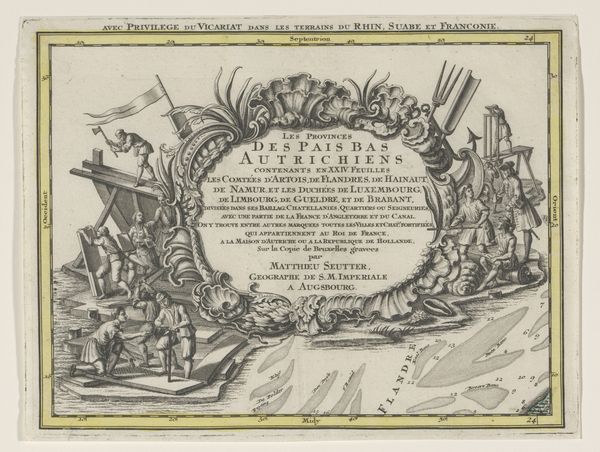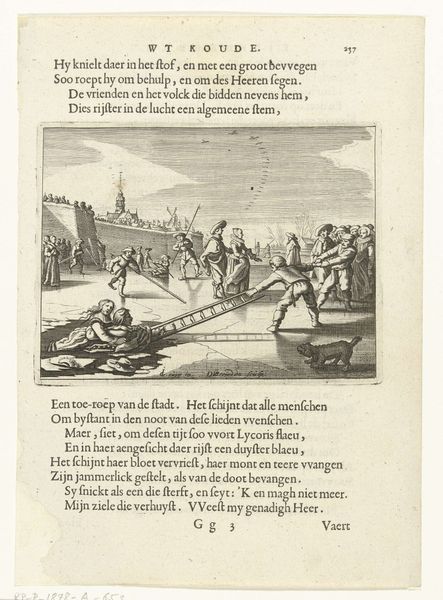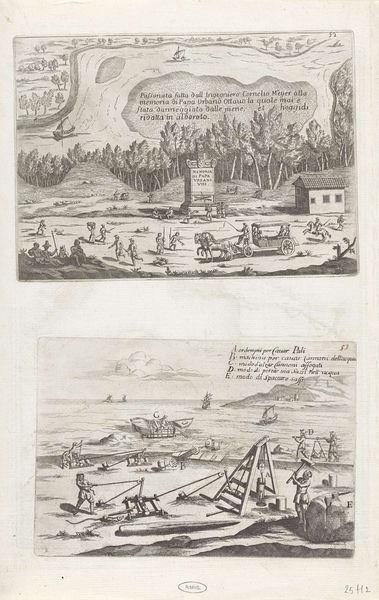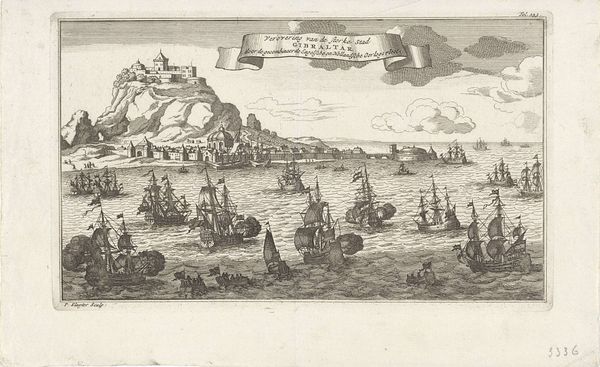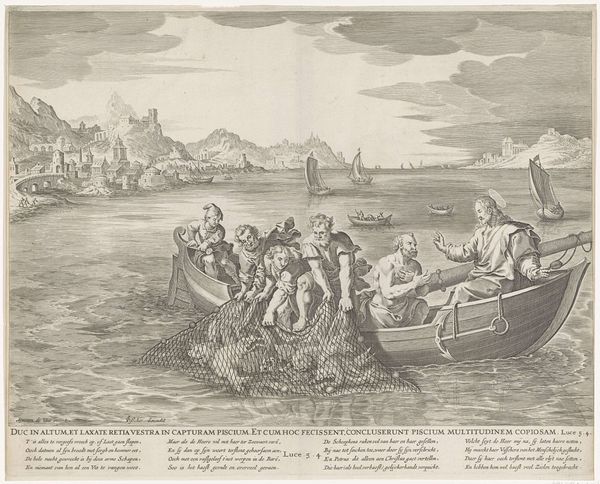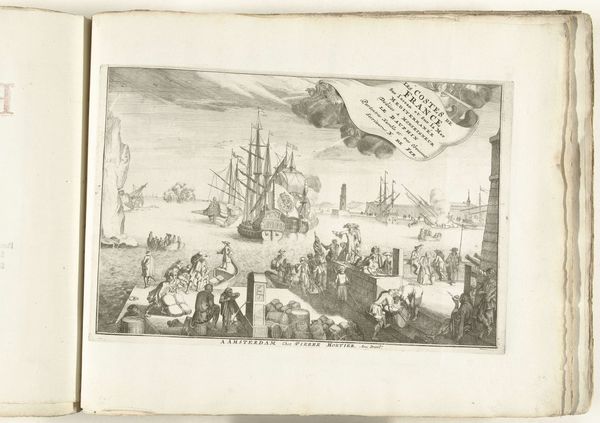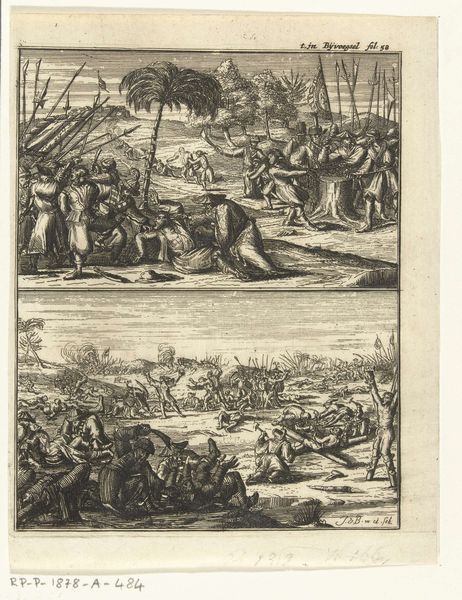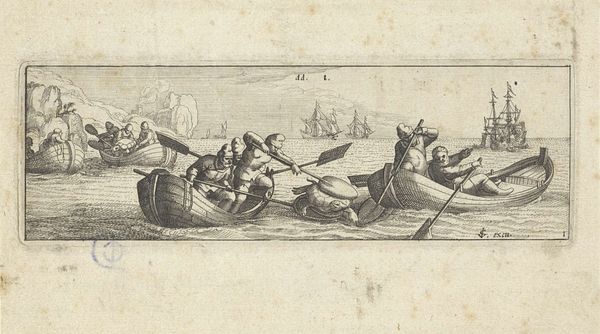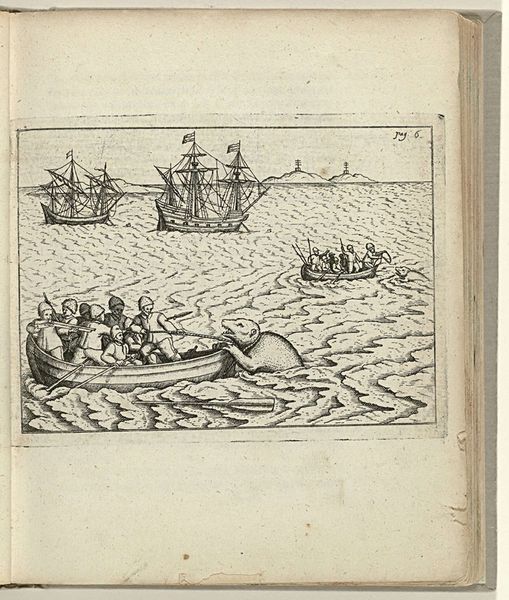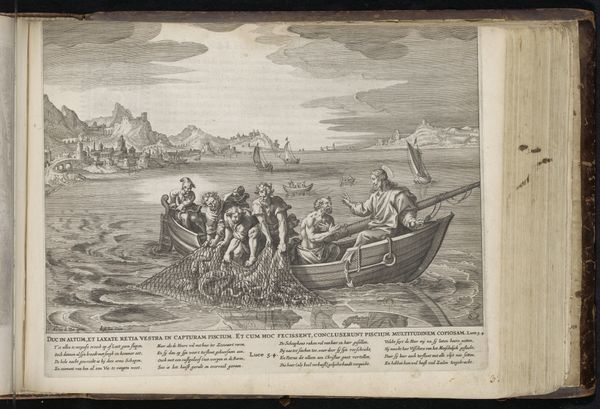
print, engraving
#
narrative-art
#
dutch-golden-age
# print
#
landscape
#
genre-painting
#
engraving
Dimensions: height 212 mm, width 167 mm, height 128 mm, width 130 mm
Copyright: Rijks Museum: Open Domain
Curator: This engraving, titled "Figuren in een trekschuit" or "Figures in a Barge," was created between 1625 and 1635. Editor: There's a certain tranquility to this scene, despite the somewhat crowded boat. The composition is interesting; a circular image set within a rectangular frame, a juxtaposition of organic and structured. The lines, as a print, are meticulously carved. Curator: It's interesting how the image serves as part of a larger book page, combined with typeset text above and below, essentially mass-produced by etching or engraving into metal plates. The very notion of "high art" becomes fluid when considering these prints, as their intention was circulation, accessible imagery depicting daily life. Editor: I'm drawn to the imagery within the circle itself: a seemingly everyday scene made evocative. Water and boats are recurring symbols throughout human history, frequently referencing journeys, both physical and spiritual. The figures packed into the boat feel almost archetypal, as if they are symbolic passengers. Notice, for instance, the way their faces are obscured, encouraging viewers to focus more on their collective human condition rather than individual identities. Curator: Indeed, the production of printed images allowed for this broader circulation of archetypes. Prints became commodities themselves, embodying social class, access to material. To really see, you must look at the process! Editor: Yes, but understanding how the artist uses boats, buildings, even the cut of the garments becomes essential for unraveling meanings. Curator: An interesting debate; whether one starts with symbols and then material or the inverse... I would say that viewing prints can offer insight into both; you notice that clothing in the barge appears fairly common for working-class. This brings us back to its circulation amongst potentially poorer classes and perhaps less wealthy families. Editor: Ultimately, images, in their historical moment or in this one, carry immense power that endures, irrespective of process. That power resides within, shaped by their context and technique. Curator: Well, yes, technique, materials, context… they converge; there are numerous considerations! Editor: A fruitful debate; these figures adrift on the water still offer us glimpses into meanings and method that endured.
Comments
No comments
Be the first to comment and join the conversation on the ultimate creative platform.
